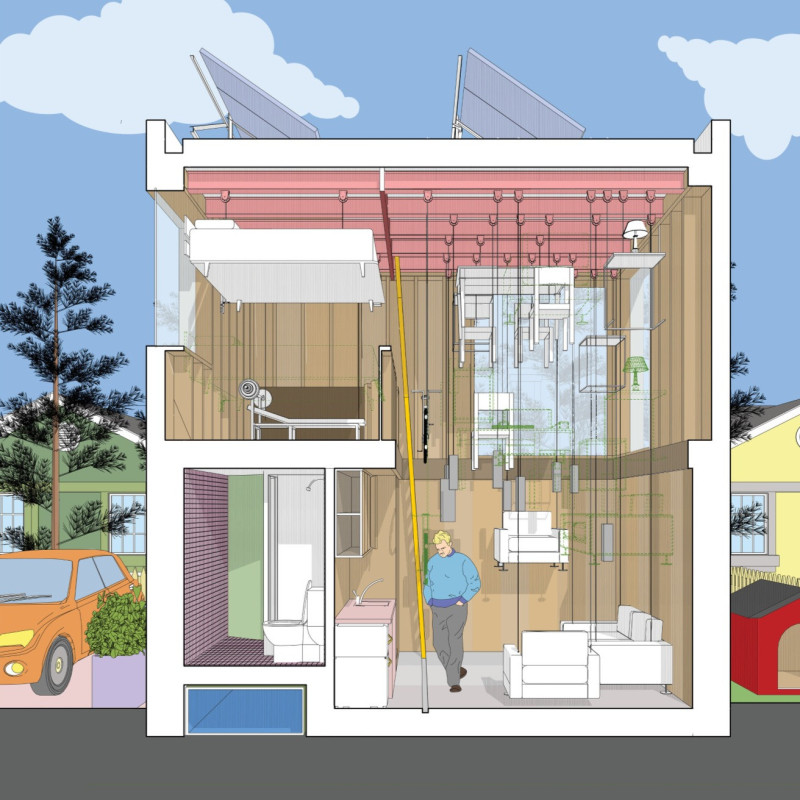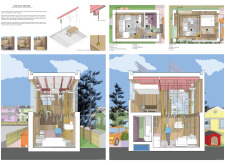5 key facts about this project
The Pulley House is an innovative micro home that showcases a practical approach to modern living. It is designed to adapt seamlessly to the needs of its inhabitants, making efficient use of a limited footprint. The setting is urban, where maximizing space is often a challenge. The overall concept centers on flexibility and multifunctionality, allowing the spaces within to serve various purposes.
Design Concept
The design employs concepts such as folding, unfolding, hiding, and sliding to create an engaging living environment. A notable feature is the pulley system, inspired by Buster Keaton's film, "The Scarecrow." This system allows furniture to be rearranged easily, transforming the flexible area into a living room, dining area, or open space depending on the time of day and activities.
Spatial Organization
Vertical space is maximized through an upper level accessed by a ladder, which opens up the ground floor for a more spacious feel. The placement of raised entrance and toilet areas makes room for a grey water tank, which serves as a practical solution for water management. This intentional organization reflects the design's emphasis on efficient use of every available area.
Sustainability Features
Sustainability plays a key role in the Pulley House design. Solar panels provide warm water and help reduce reliance on fossil fuels. The grey water tank captures water for reuse in daily tasks like bathing, laundry, and dishwashing. This integration of sustainable elements enhances living conditions while aligning with environmental goals.
Mechanical Integration
The pulley system adds both functionality and a playful aspect to the design. It encourages inhabitants to interact with their space, allowing for easy modifications based on daily requirements. This mechanical feature stands out as a creative solution, rethinking how a home can adapt to the user’s needs.
In the flexible area, occupants can experience the transformation of space through the movement of furniture and the open layout. The focus on adaptability enhances daily living and illustrates a modern approach to compact housing.


















































